Life thrives on energy. From the smallest bacterium to the largest whale, every living organism requires a constant supply of energy to fuel its myriad processes. This energy, crucial for growth, movement, and repair, is primarily derived from a fascinating process known as cellular respiration. But Where Does Cellular Respiration Take Place within these complex biological systems? Understanding the location of this vital process is key to grasping how life sustains itself at a cellular level.
 Camp fire
Camp fire
The Cellular Need for Energy: Powering Life’s Processes
Imagine a bustling city that never sleeps. Cells, the fundamental units of life, are much like these cities, constantly working to maintain life. This relentless activity demands energy. Think about the energy required to build proteins, transport molecules across cell membranes, or even for muscle cells to contract and allow you to move. All of these activities, and countless others, are powered by energy stored in the chemical bonds of molecules, primarily glucose, a simple sugar derived from the food we eat, or produced by plants through photosynthesis.
This chemical energy isn’t directly usable by cells in the form of glucose. It needs to be converted into a more readily accessible form: ATP (adenosine triphosphate). ATP is often referred to as the “energy currency” of the cell, acting like a rechargeable battery that powers cellular work. Cellular respiration is the process that facilitates this crucial energy conversion, extracting the energy locked within glucose and repackaging it into ATP molecules.
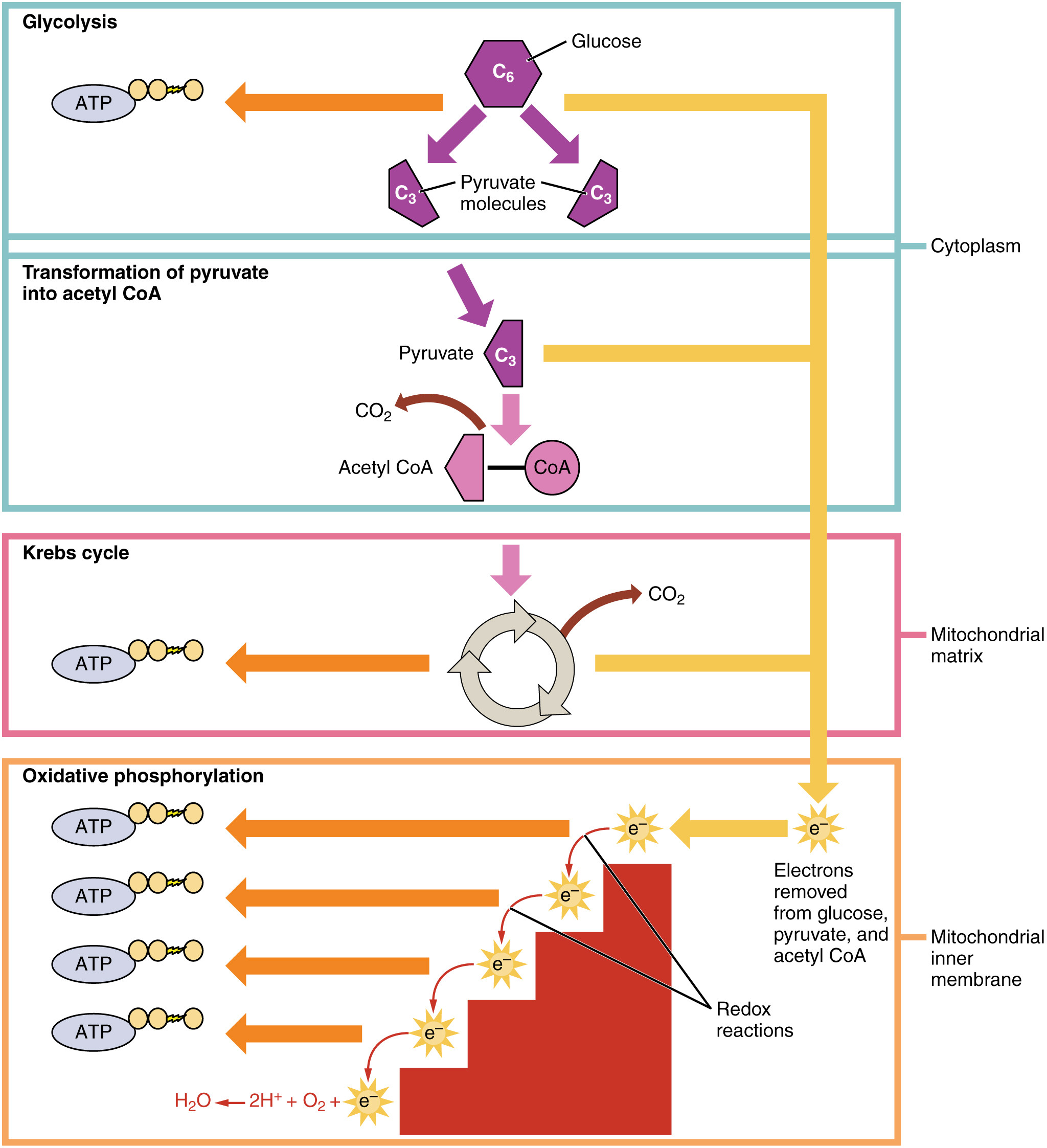 Chemical structure of ATP
Chemical structure of ATP
Unpacking Cellular Respiration: A Multi-Stage Energy Extraction
Cellular respiration is not a single step, but rather a series of meticulously orchestrated biochemical reactions. Think of it as a well-organized factory line, where glucose is progressively broken down, and its stored energy is captured in stages. This stepwise process is critical because it allows for a controlled release of energy, preventing damage to the cell that a sudden, uncontrolled burst of energy could cause.
Cellular respiration is broadly categorized into three main stages, each with a specific location within the cell:
1. Glycolysis: The Cytoplasmic Start
The first stage, glycolysis, meaning “glucose splitting,” takes place in the cytosol, the gel-like substance filling the cytoplasm of the cell. Crucially, glycolysis does not require oxygen and is thus an anaerobic process. Here, a glucose molecule, containing six carbon atoms, is broken down into two molecules of pyruvate, each containing three carbon atoms.
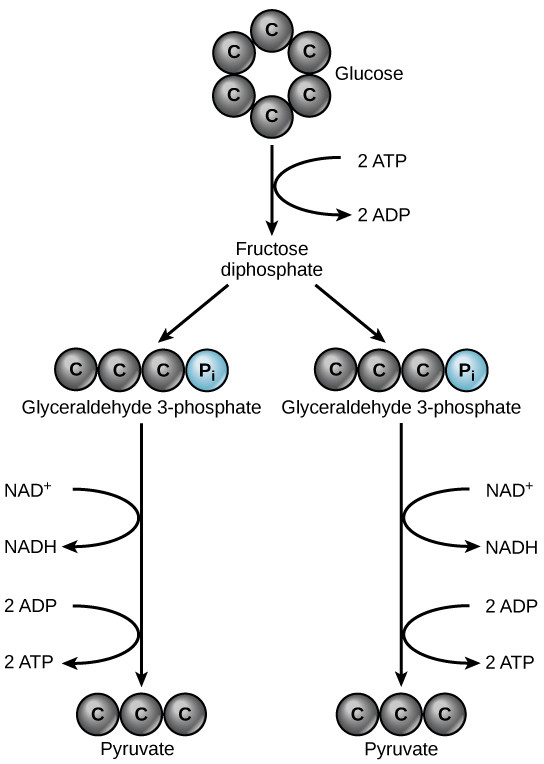 glycolysis
glycolysis
Glycolysis is not a highly efficient energy-generating process on its own. It requires an initial investment of 2 ATP molecules, but it yields a net gain of only 2 ATP molecules, along with 2 molecules of NADH, an electron carrier that plays a vital role in later stages. While the ATP yield is modest, glycolysis is a fundamental and ancient pathway, present in nearly all living organisms.
2. Pyruvate Oxidation and the Krebs Cycle: Entering the Mitochondria
In eukaryotic cells, organisms with membrane-bound organelles, the subsequent stages of cellular respiration occur within the mitochondria, often referred to as the “powerhouses of the cell.” If oxygen is available, the pyruvate molecules produced in glycolysis are transported from the cytoplasm into the mitochondrial matrix, the innermost compartment of the mitochondrion.
First, pyruvate oxidation takes place in the mitochondrial matrix. Here, each pyruvate molecule undergoes a transformation, losing a carbon atom in the form of carbon dioxide and becoming a two-carbon molecule called acetyl-CoA. This process also generates one molecule of NADH per pyruvate.
Following pyruvate oxidation, the Krebs cycle, also known as the citric acid cycle, commences in the mitochondrial matrix. Acetyl-CoA enters the Krebs cycle, a series of chemical reactions that further oxidize the remaining carbon atoms, releasing carbon dioxide as a waste product. For each molecule of acetyl-CoA that enters the cycle, the Krebs cycle produces:
- 2 molecules of carbon dioxide (CO2)
- 3 molecules of NADH
- 1 molecule of FADH2 (another electron carrier, similar to NADH)
- 1 molecule of ATP (or GTP, another energy-carrying molecule)
Since glycolysis produces two pyruvate molecules per glucose molecule, the pyruvate oxidation and Krebs cycle steps occur twice for each initial glucose molecule.
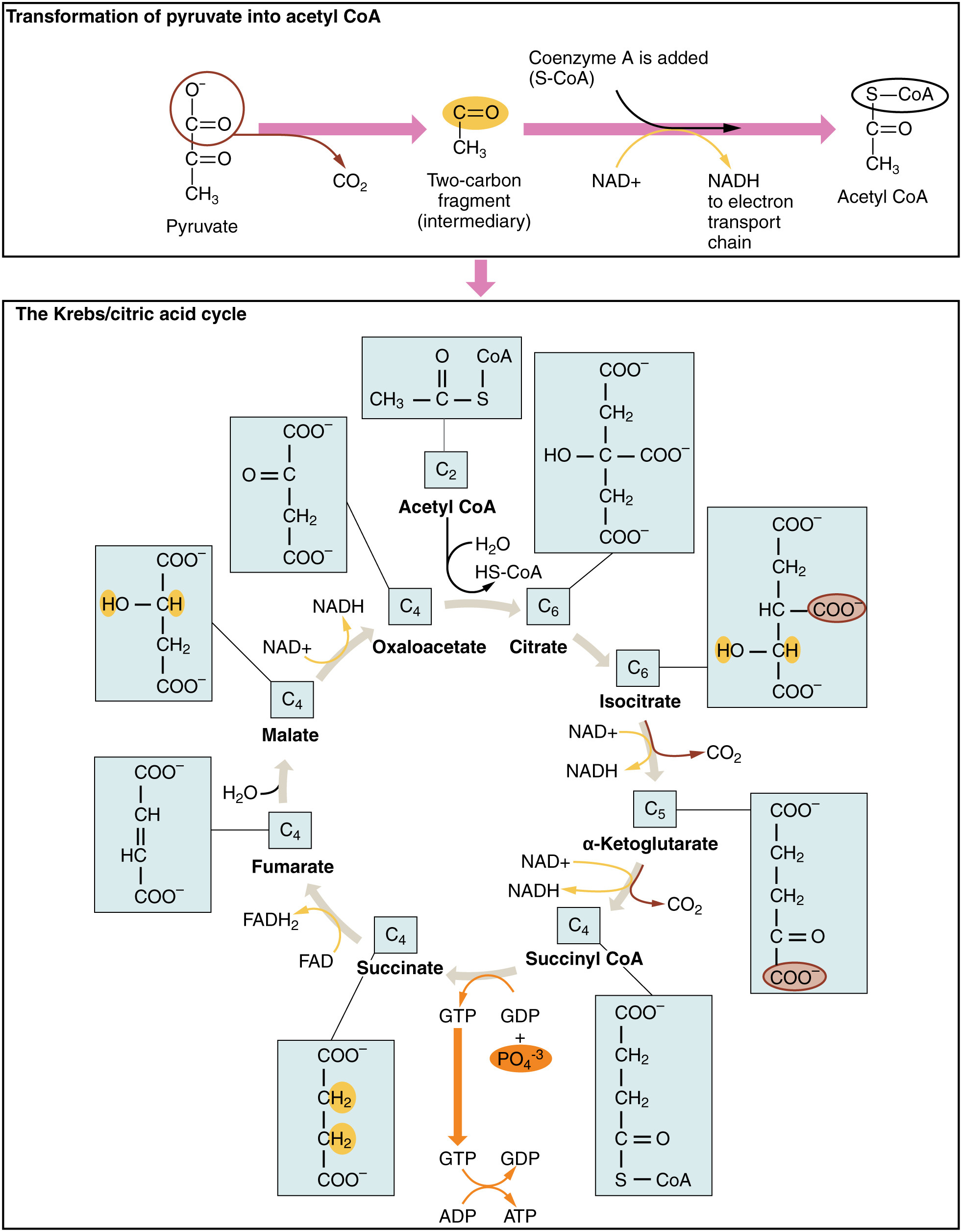 The Krebs Cycle
The Krebs Cycle
3. Oxidative Phosphorylation: The Inner Mitochondrial Membrane and ATP Production Powerhouse
The final and most ATP-generating stage of cellular respiration is oxidative phosphorylation. This stage is located in the inner mitochondrial membrane, which is folded into cristae to increase surface area. Oxidative phosphorylation consists of two tightly coupled components: the electron transport chain and chemiosmosis.
The electron transport chain (ETC) is a series of protein complexes embedded in the inner mitochondrial membrane. NADH and FADH2, generated in glycolysis, pyruvate oxidation, and the Krebs cycle, deliver their high-energy electrons to the ETC. As these electrons move through the chain, they release energy. This energy is used to pump protons (H+) from the mitochondrial matrix to the intermembrane space, the region between the inner and outer mitochondrial membranes. This pumping action creates an electrochemical gradient, with a higher concentration of protons in the intermembrane space than in the matrix.
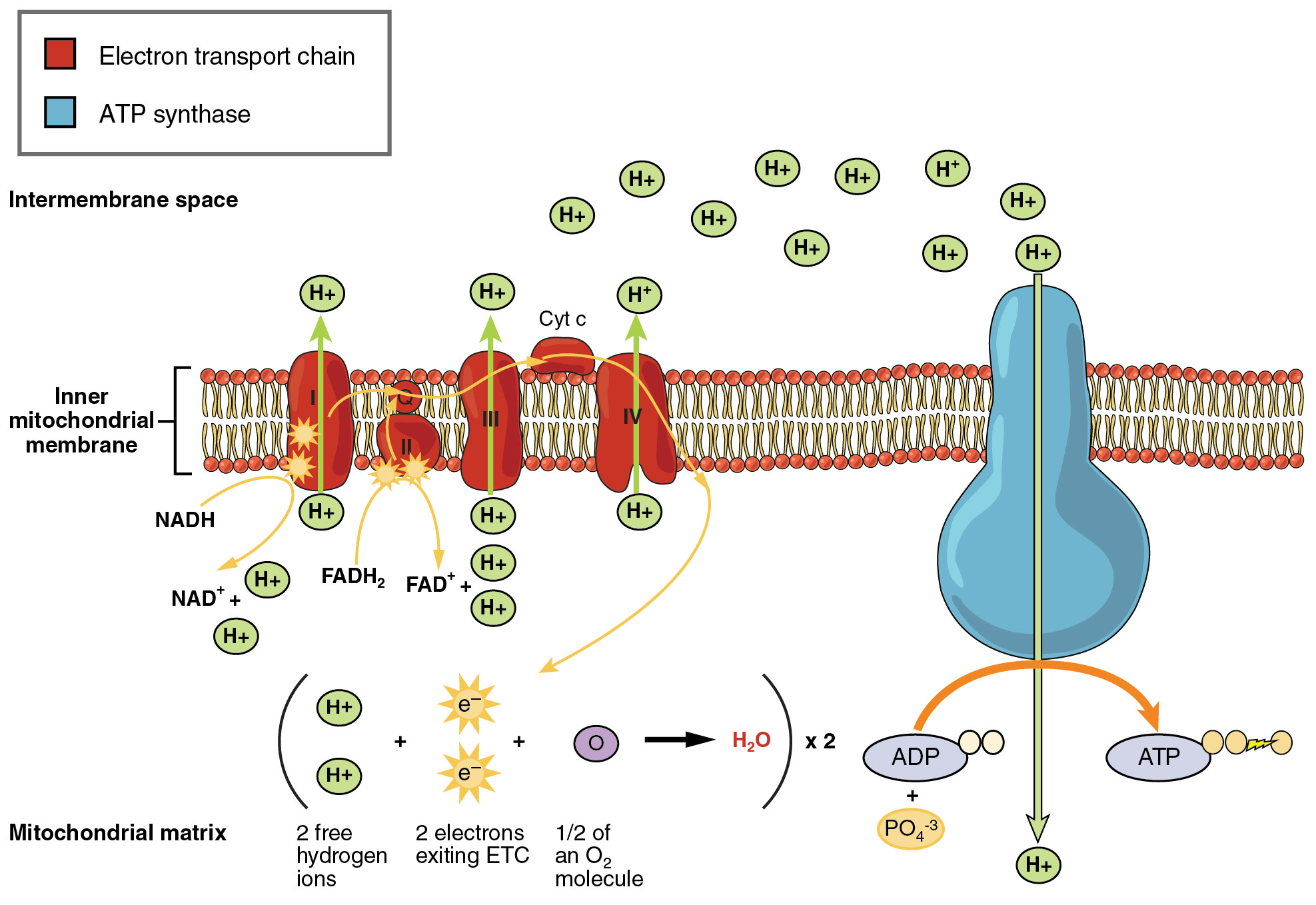 Mitochondrial oxidative phosphorilation
Mitochondrial oxidative phosphorilation
Chemiosmosis is the process where the potential energy stored in the proton gradient is harnessed to synthesize ATP. Protons flow down their electrochemical gradient, from the intermembrane space back into the mitochondrial matrix, through a protein complex called ATP synthase. ATP synthase acts like a molecular turbine, using the flow of protons to drive the rotation of its parts and catalyze the phosphorylation of ADP (adenosine diphosphate) to ATP. This process generates the vast majority of ATP produced during cellular respiration. Oxygen acts as the final electron acceptor at the end of the ETC, combining with electrons and protons to form water, a byproduct of cellular respiration. Because oxygen is required for this final stage, cellular respiration beyond glycolysis is considered an aerobic process.
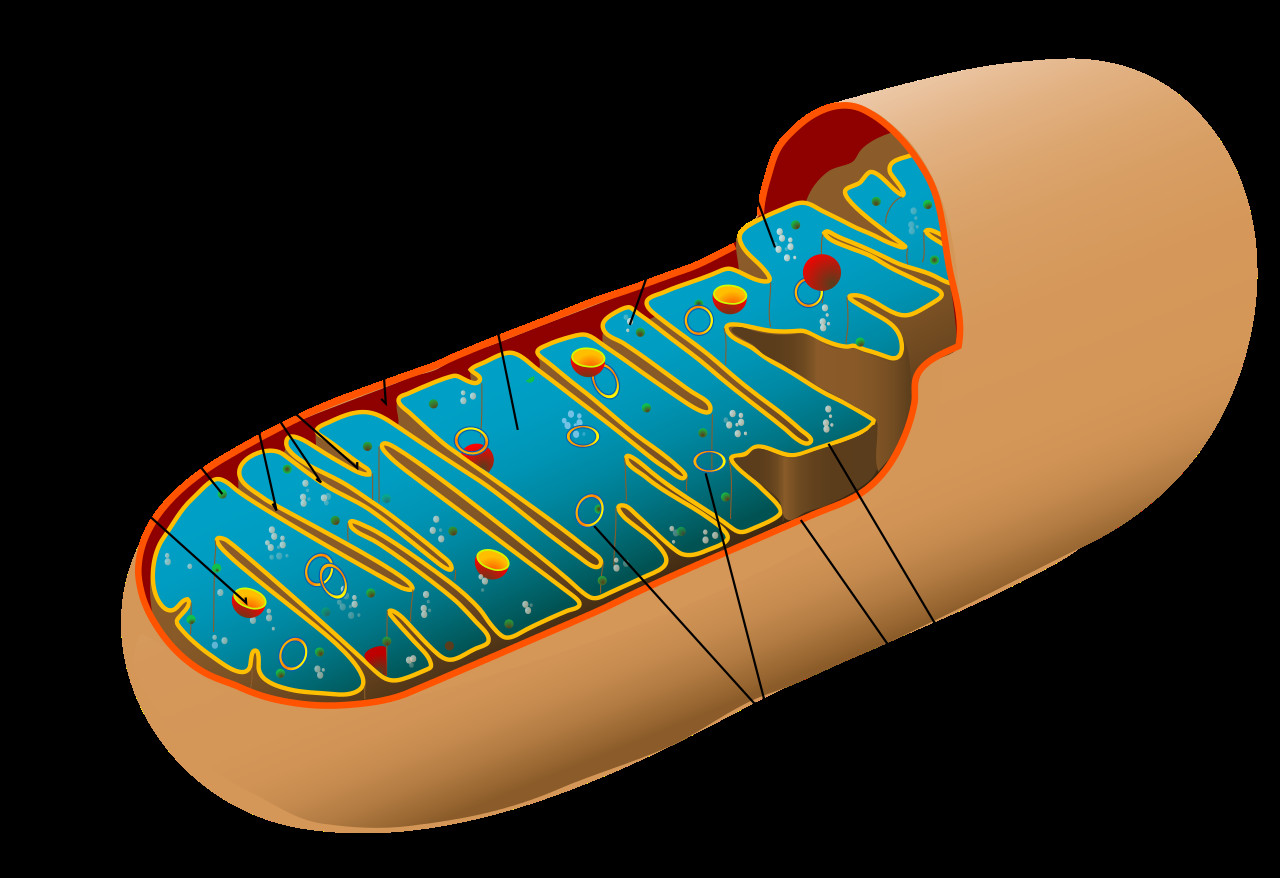 Animal mitochondrion diagram
Animal mitochondrion diagram
Why Location Matters: Compartmentalization for Efficiency
The specific locations of each stage of cellular respiration are not arbitrary; they are crucial for the efficiency and regulation of the process. Compartmentalization within the cell, particularly the sequestration of the Krebs cycle and oxidative phosphorylation within the mitochondria, provides several advantages:
- Concentration of Enzymes and Reactants: Mitochondria concentrate the enzymes and molecules required for the Krebs cycle and oxidative phosphorylation, increasing the speed and efficiency of these reactions.
- Membrane for Gradient Formation: The inner mitochondrial membrane provides a barrier across which the proton gradient can be established during oxidative phosphorylation, essential for ATP production.
- Regulation and Control: Separating these processes allows for finer control and regulation of each stage, ensuring that ATP production is matched to the cell’s energy needs.
Cellular Respiration Across Life: A Universal Energy Strategy
Cellular respiration is a universal process, occurring in the cells of virtually all living organisms, including both autotrophs (organisms that produce their own food, like plants) and heterotrophs (organisms that consume other organisms for food, like animals). Even though plants are known for photosynthesis, they also perform cellular respiration to break down the sugars they produce and generate ATP to power their cellular activities.
While the core stages and locations remain consistent, slight variations in the enzymes and regulatory mechanisms of cellular respiration can exist across different species, reflecting adaptations to diverse environments and energy demands.
Conclusion: Cellular Respiration’s Location – The Key to Life’s Energy
In summary, to answer the question, “where does cellular respiration take place?“, we can pinpoint specific locations within the cell for each stage:
- Glycolysis: Cytoplasm (cytosol)
- Pyruvate Oxidation: Mitochondrial Matrix
- Krebs Cycle (Citric Acid Cycle): Mitochondrial Matrix
- Oxidative Phosphorylation (Electron Transport Chain & Chemiosmosis): Inner Mitochondrial Membrane
This precise compartmentalization is not just a matter of cellular geography; it’s fundamental to the efficient extraction of energy from glucose and the generation of ATP, the energy currency that fuels life. Understanding these locations provides a deeper appreciation for the intricate and elegant mechanisms that underpin life at its most fundamental level.
